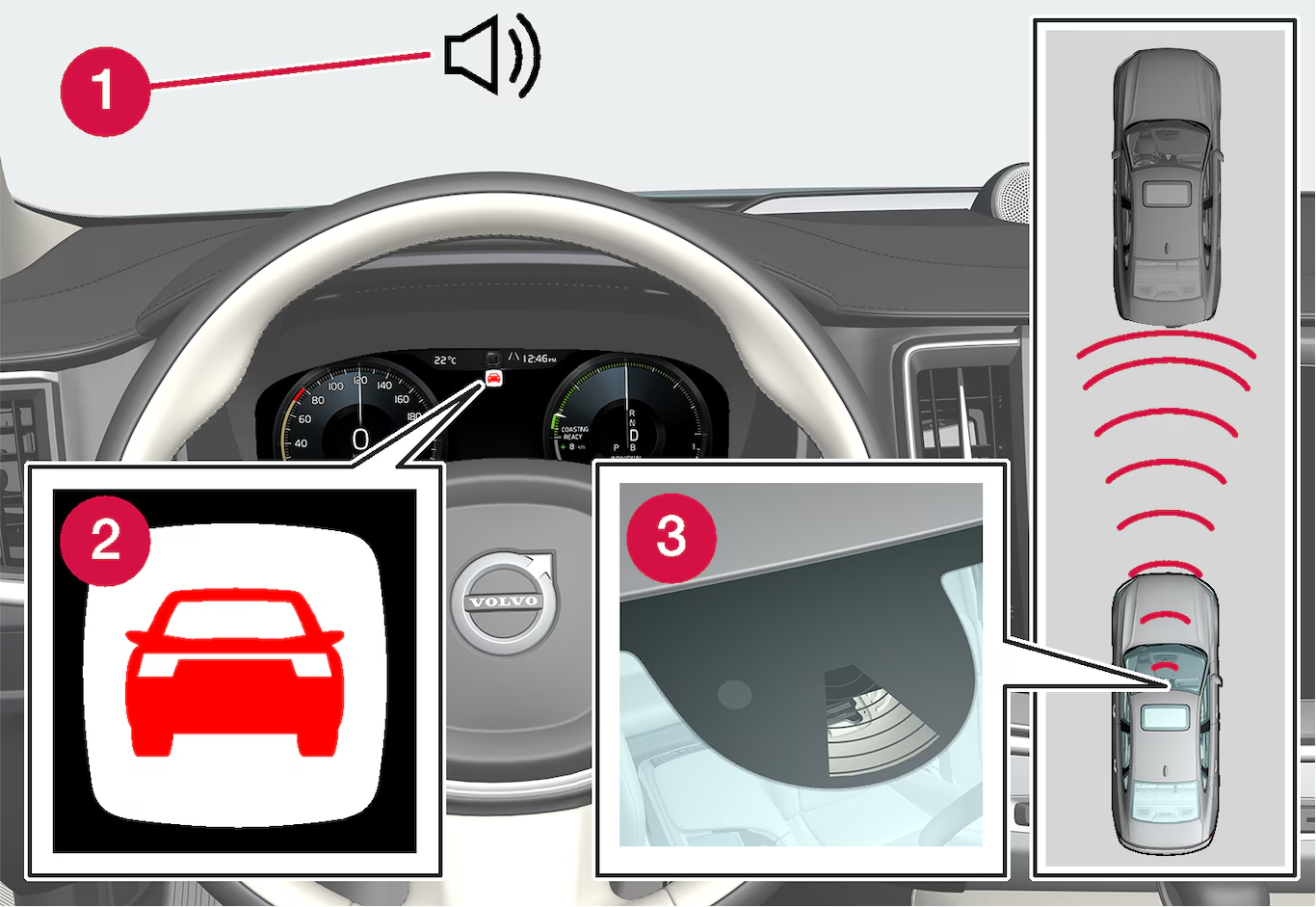City Safety parameters and sub-functions
If the difference in speed is greater than the speeds specified below, the City Safety auto-brake function cannot prevent a collision, but it can help mitigate its effects.
Vehicles
City Safety can help prevent a collision with a vehicle ahead by reducing your vehicle's speed by up to 60 km/h (37 mph).
Cyclists
City Safety can help prevent a collision with a cyclist ahead by reducing your vehicle's speed by up to 50 km/h (30 mph).
Pedestrians
City Safety can help prevent a collision with a pedestrian ahead by reducing your vehicle's speed by up to 45 km/h (28 mph).
Large animals
If there is a risk of colliding with a large animal, City Safety can help reduce your vehicle's speed by up to 15 km/h (9 mph).
The braking function for large animals is primarily intended to mitigate the force of a collision at higher speeds. Braking is most effective at speeds above 70 km/h (43 mph) and less effective at lower speeds.
City Safety sub-functions

 Acoustic collision warning signal
Acoustic collision warning signal Collision warning symbol
Collision warning symbol Camera/radar sensor distance monitoring
Camera/radar sensor distance monitoring
- Collision warning
- Brake assistance
- Auto-brake
Descriptions of what happens in these three steps are provided below.
1 - Collision warning
The driver is first alerted to the risk of an imminent collision.
City Safety can detect pedestrians, cyclists or vehicles that are stationary, are moving in the same direction as your vehicle and are ahead of your vehicle. City Safety can also detect pedestrians, cyclists or large animals that are crossing the road in front of your vehicle.
If there is a risk of a collision with a pedestrian, large animal, cyclist or another vehicle, or with a vehicle described in the section "City Safety in crossing traffic", the driver will be alerted with light, sound and pulsations in the brake pedal. At lower speeds, during hard braking or if the accelerator pedal is pressed, the brake pedal pulsation warning will not be given. The intensity of the brake pedal pulsations varies according to the vehicle's speed.
2 - Brake assistance
If the risk of a collision increases after the collision warning, brake support will be activated.
If the system determines that the pressure the driver is exerting on the brake pedal is insufficient to prevent the collision, brake support will increase pressure.
3 - Auto-brake
The automatic braking function is activated at the last moment.
If the driver has not taken evasive action by this stage and a collision is imminent, the automatic braking function will be triggered. This occurs whether or not the driver is pressing the brake pedal. Full braking force will be applied to reduce the speed at impact or reduced braking effect will be applied if this is sufficient to avoid the collision.
The seat belt tensioners may be activated along with the automatic braking function. See "Seat belt tensioners" for more information.
In certain situations, auto-braking may begin with a limited braking force before applying full braking force.
If City Safety has prevented a collision, the vehicle will be kept at a standstill until the driver takes action. If the vehicle has slowed to avoid colliding with a slower-moving vehicle ahead, your speed will be reduced to that vehicle's speed.
Auto-braking can always be cancelled if the driver presses hard on the accelerator pedal.
Note
When City Safety applies the brakes, a text message will appear in the instrument panel to notify the driver that the function is/was activated.